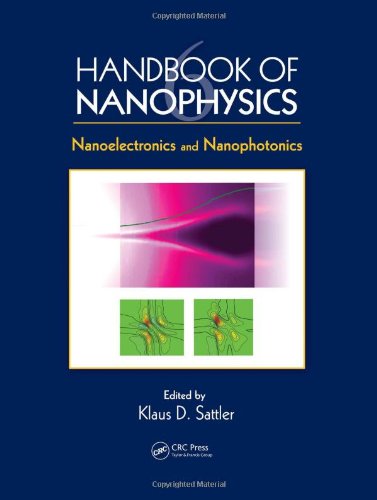

Most ebook files are in PDF format, so you can easily read them using various software such as Foxit Reader or directly on the Google Chrome browser.
Some ebook files are released by publishers in other formats such as .awz, .mobi, .epub, .fb2, etc. You may need to install specific software to read these formats on mobile/PC, such as Calibre.
Please read the tutorial at this link. https://ebooknice.com/page/post?id=faq
We offer FREE conversion to the popular formats you request; however, this may take some time. Therefore, right after payment, please email us, and we will try to provide the service as quickly as possible.
For some exceptional file formats or broken links (if any), please refrain from opening any disputes. Instead, email us first, and we will try to assist within a maximum of 6 hours.
EbookNice Team

Status:
Available0.0
0 reviewsMany bottom-up and top-down techniques for nanomaterial and nanostructure generation have enabled the development of applications in nanoelectronics and nanophotonics. Handbook of Nanophysics: Nanoelectronics and Nanophotonics explores important recent applications of nanophysics in the areas of electronics and photonics. Each peer-reviewed chapter contains a broad-based introduction and enhances understanding of the state-of-the-art scientific content through fundamental equations and illustrations, some in color.
This volume discusses how different nanomaterials, such as quantum dots and nanotubes, are used in quantum computing, capacitors, and transistors. Leading international experts review the potential of the novel patterning techniques in molecular electronics as well as nanolithography approaches for producing semiconductor circuits. They also describe optical properties of nanostructures, nanowires, nanorods, and clusters, including cathodoluminescence, photoluminescence, and polarization-sensitivity. In addition, the book covers nanophotonic devices and nanolasers.
Nanophysics brings together multiple disciplines to determine the structural, electronic, optical, and thermal behavior of nanomaterials; electrical and thermal conductivity; the forces between nanoscale objects; and the transition between classical and quantum behavior. Facilitating communication across many disciplines, this landmark publication encourages scientists with disparate interests to collaborate on interdisciplinary projects and incorporate the theory and methodology of other areas into their work.